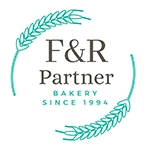Toast bread is a practical and popular type of bread: it's long-lasting and you don't have to bother slicing it. In Europe, it is recommended to be eaten toasted, either in a suitable oven or in a pan. In America, it is larger in size and is usually the base for sandwiches, which do not always require toasting. You would not believe how long ago it was discovered.
Archaeological research shows that flour was used as long as 30,000 years ago. It was used to make breadcrumbs, which can be considered the ancestor of bread. In Ancient Greece, bread was also used for ritual purposes, offered to their gods as part of various rituals. Wheat and barley were the first crops to be domesticated, and research suggests that the ability to bake bread was one of the reasons why people settled down and abandoned their former nomadic lifestyle.
The bread we know today was discovered in ancient Egypt, according to research. They observed that dough made into bread rises when left in the air and retains its shape when baked. It was here that closed ovens were first used. Bread was so highly prized that it was often used to pay the workers who built the pyramids. The leavened, leavened varieties were more highly valued than their flat counterparts. They had one problem: left in the air, they quickly hardened and were no longer a pleasure to eat. They discovered that if the bread was sliced and toasted, it would become an edible food again.
The Romans also adopted the tradition of toasting bread. The word toast itself is of Latin origin, derived from the word "tostum", meaning to burn or scorch. In the beginning, the slices were toasted over a direct fire, and later tools such as wire toasts or sticks were used.
The first toaster had to wait a few more years. It was invented by Alan MacMasters of Scotland in 1893 to be precise, but it was not a great success. The iron wiring often melted, making it a fire hazard, and the use of electricity was not yet widespread.
Shortly afterwards, in 1905, two Chicago inventors created a safer version, and one after the other, new products appeared on the market. They toasted only one side of the slice, turning the bread inside out. In 1913, this problem was solved by the invention of the automatic toast turner, followed by the semi-automatic toaster, which after a while switched off the heating element. The modern timed pop-up toaster was invented in 1919.
All that was missing was the sliced bread to make breakfast easier to prepare. Otto Frederick Rohwedder invented the world's first automatic bread slicer. In 1912 he completed his prototype, but unfortunately a fire in 1917 destroyed both his plans and the machine. He had to start all over again, which was difficult as bakers did not support the idea of pre-sliced bread. They feared it would be ruined before it was sold and would expire, which they thought would not go down well with customers. Rohwedder finally rebuilt his machine in 1927. At first, he tried to overcome the obstacle of perishability by using small nails to hold the bread together after slicing. This ultimately failed, so he modified the machine to wrap the bread in wax paper immediately after slicing. Using this machine, the first toast bread was sold by the Chillicothe Baking Company on July 7, 1928, followed by a huge success, with people loving the "Kleen Maid Sliced Bread" brand of pre-sliced bread. The first machine was worn out after six months of continuous operation. In 1930, the Wonder Bread brand became internationally popular thanks to toast bread, who innovated Rohwedder's machine with their own special equipment. By 1933, bakeries were selling more sliced bread than plain.
Pre-sliced bread helped the spread of the toaster, as people realised how quickly they could prepare food. Nowadays, 88%s can be found in American homes.
At toast breads are available in several varieties and flavours. Visit American toast on bread characterised by higher wind speeds and in our webshop two types are available: white and wholemeal. Our Pantastico! range with 5 varieties to choose from: white, 8 magvas, wholemeal, durum and vajas. The 400 gram packs have a unique hygienic double packaging to ensure touch-free packaging. In addition to these, you will find many of our other toast breads on the shelves of hypermarkets and discount stores.

Source: http://www.todayifoundout.com/index.php/2013/10/history-toast/
